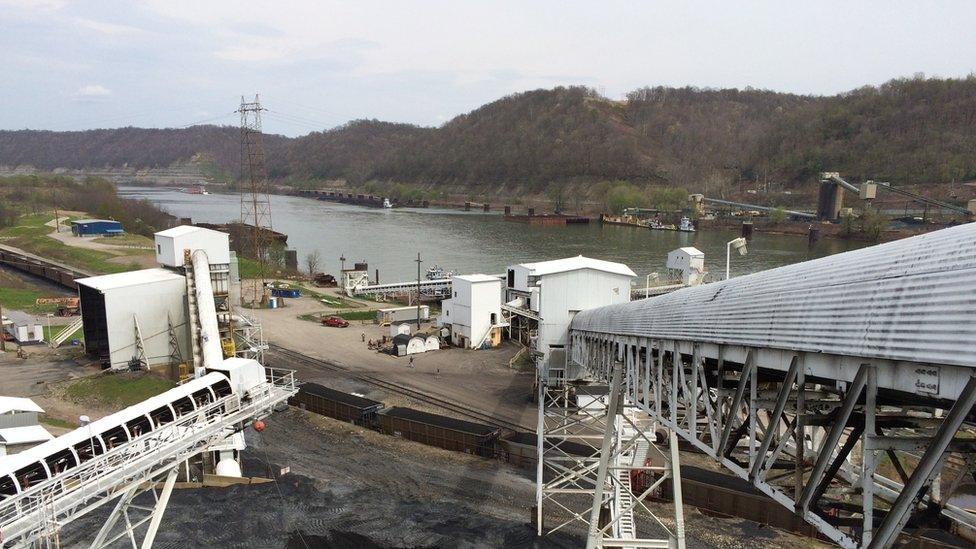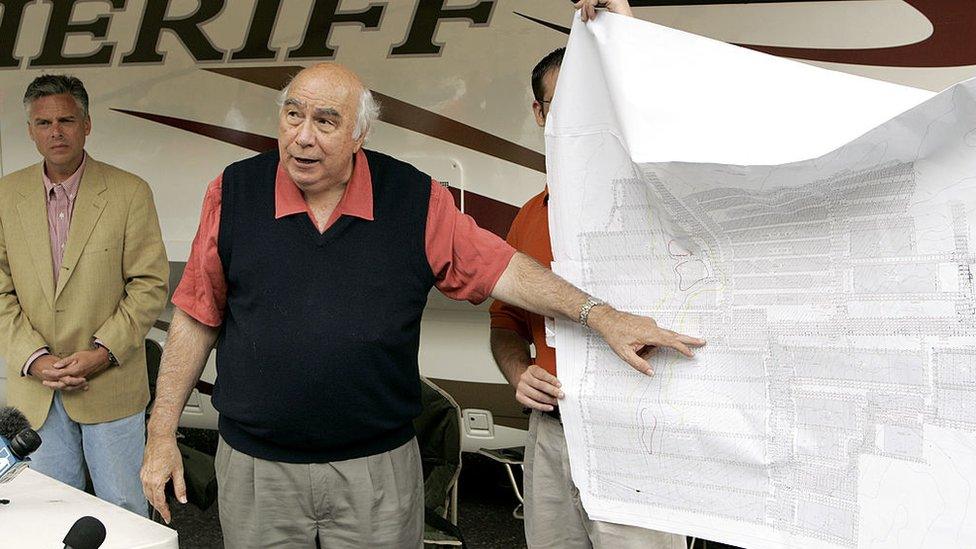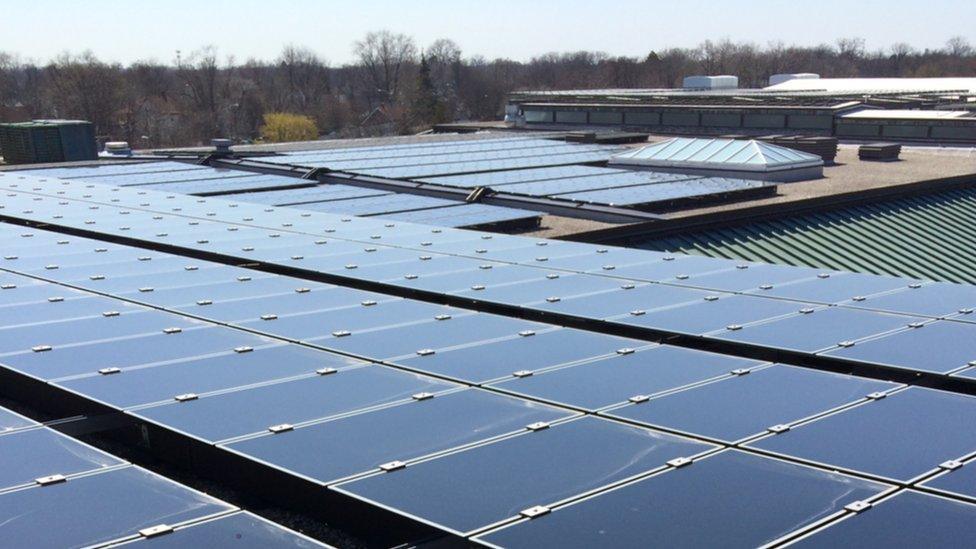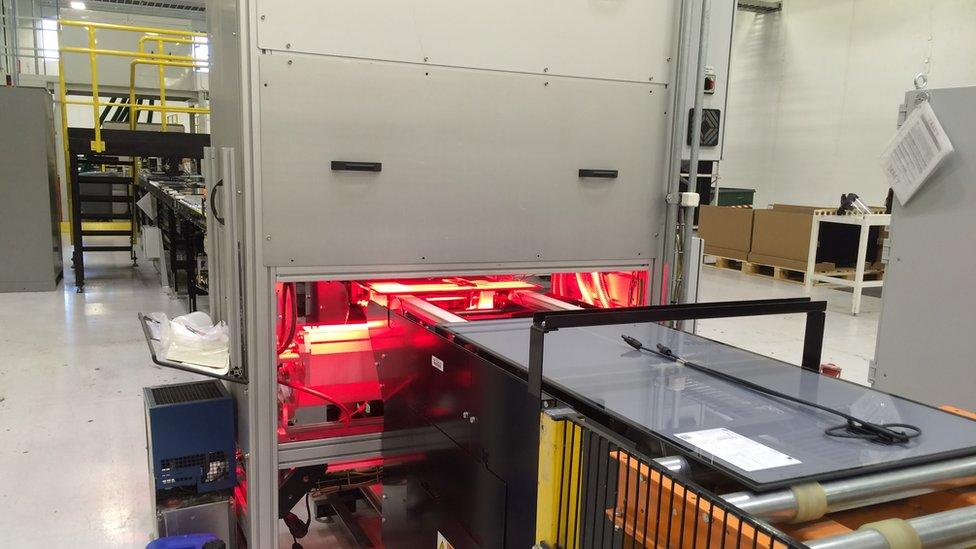Global warming and the race for the White House
- Published

Two starkly different visions of global warming are offered by Hillary Clinton and Donald Trump in their race for the White House.
The Democratic Party contender says she believes in the science of climate change and plans to see America become a "clean energy superpower" - installing half-a-billion solar panels by the end of her first term.
By contrast, the Republican candidate talks down the threat of rising temperatures and says his priority is to cut the costs of energy for manufacturers and to revive the coal industry.
Hillary Clinton is a strong supporter of the Paris Agreement on climate change. Donald Trump wants to renegotiate it or pull America out of it.
Because the US has the world's largest economy, and is the second-biggest emitter of greenhouse gases after China, the outcome of this struggle will reverberate internationally. If the US leaves the Paris Agreement, the painfully-negotiated deal could unravel.
With such sharply opposing perspectives, this is the first presidential contest in which the candidates are highlighting their stances on global warming and energy, and using them to attack each other.
So how is this playing out in a swing state like Ohio, which hosts some of America's oldest coalfields and one of the most innovative solar panel makers?

Through the east of the state, the mighty Ohio River flows like an artery for the coal industry, with the heavy machinery of mines, loading stations and power plants lining the steep green banks.
For more than a century, this has been a crucible of power production for the US economy, with vast quantities of coal burned to generate electricity. And because the jobs paid well, and there were lots of them, the communities thrived.
But in recent years, fortunes have changed. The pollution belching from the smokestacks has been gradually limited by wave after wave of legislation - first on emissions of sulphur dioxide, then of nitrogen dioxide, and now of carbon dioxide.
It's no surprise, but along this valley the Environmental Protection Agency is held in contempt. This is the body responsible for cleaning up the air and reducing greenhouse gases under President Obama's Clean Power Plan. A key Trump promise is to dismantle both the agency and the plan.
The reality is that environmental regulation is not the only challenge to coal. Another has come from fracking, the revolution that's opened up deep layers of shale rock to release new supplies of plentiful gas that's cheaper and cleaner than coal.
In any event, the result is that demand for coal is falling and the mines have long been in trouble. As many as 50 mining companies have filed for bankruptcy.

Robert Murray of the Murray Energy Corporation is a high-profile defender of the coal industry
At one pit head, a dozen blackened faces emerged from a lift - this was the day shift, about half the size it would normally have been. Cuts are taking their toll. The mine will close by the end of the year.
Here, Hillary Clinton is a hate figure. A newspaper cutting, pinned to a wall, highlights her saying "We're going to put a lot of coal miners and coal companies out of business."
She later clarified that comment. What she meant to say was that the switch to cleaner energy would inevitably mean coal closures and that she wants to support communities making the transition. But the damage was done.
I talked to the mine's owner, one of the leading figures in the coal industry, Robert Murray of the Murray Energy Corporation.
An outspoken defender of US coal, and prominent in launching legal challenges against the Clean Power Plan, he followed his father into the mines and keeps a polished lump of coal in his board-room.
While many coal mining companies declined our requests for interviews, Mr Murray jumped at the chance, and there was no holding him back.
"What happens is when two coal miners get laid off, if they own anything it's their homes and, when they get laid off, they have no one to sell their homes to.
"So those people who just want to work in honour and dignity are denied that, and it's not the America that I cherish… That's why I speak out like I do, that's why I say, Obama is a greater scourge than America has ever had in its history."

Solar panels covering the roof of Museum of Art, Toledo
Donald Trump would agree with all that. He sees coal as abundant and homegrown, and responsible for thousands of jobs. And he talks of revitalising the industry, which goes down very well in mining country.
The fact that it is the dirtiest fossil fuel is irrelevant in the Trump view because global warming is a "hoax" as he once called it, though he later said that was a joke.
So what about the alternative vision?
Only a hundred miles to the west, there's a very different Ohio. The zoo in the city of Toledo has solar panels covering its walkways. The huge roof of the city's famous Museum of Art is shining with them too.
With many major companies like Wal-Mart investing in renewable power, the sight of solar installations in this notoriously gas-guzzling nation is no longer so unusual.
On the edge of Toledo, in a landscaped business park, stand the sleek buildings of First Solar. A gigantic manufacturing hall is busy with robots and people working side-by-side. Together with a larger sister plant in southeast Asia, this company can boast of a remarkable statistic: it churns out a new solar panel every single second.
The executives do not want to be drawn into talking politics but they argue that we are witnessing a fundamental transformation: not only have solar panels increased in efficiency but they have also tumbled in price.
No longer is solar just a fad for the eco-conscious rich. The largest solar installations - "utility-scale" in the jargon - in the sunniest parts of the US can generate electricity that is comparable in cost to that of coal.

The First Solar factory produces a solar panel every second
Though solar power is still intermittent, as with wind, the fall in cost does mean that during the hot days of high summer, when air-conditioning is running at full blast, the electricity supply can be carbon-free.
The implication is that solar power may be starting to make sense purely on financial grounds, regardless of any other motivation such as aiming to reduce carbon emissions.
At the state's largest solar array, covering a long rolling field, Bill Spratley of Green Energy Ohio, a renewables advocacy group, told me that the new reality of cheaper renewable energy would change the debate.
"We have some politicians that are fighting the last war, they're fighting over something, they still believe solar is in the future but it's here now.
"We've probably passed the tipping point or the turning point and they just don't know it yet."
If solar costs keep falling, and coal continues to be undermined by shale gas, then it may be that a Trump victory would not do much to alter what could be an historic trend away from coal into cleaner sources of energy. Even outside the Paris Agreement, US energy companies and big corporations may still see logic in making the switch.
As we leave the solar farm, an engineer managing the installation joined the conversation. "Solar makes sense to me," he said, "and I'm a Republican".